In the Sinhua Hills (新化丘陵) of Tainan, farms, temples, narrow roads and stands of bamboo dot the landscape, making them virtually indistinguishable from other rural areas in southern Taiwan. There is one important difference, however: over the years, the environment here has alternated between ocean, brackish lagoon, freshwater, and dry land, leaving behind a rich variety and concentration of fossils. As the Cailiao River (菜寮溪) erodes the hills, these fossils are continuously being exposed.
These fossils were first excavated for academic study during the Japanese colonial period, eventually culminating in the opening of a museum dedicated to their display. Over the years, this museum grew, first merging with a neighboring hall dedicated to indigenous Pingpu relics, then undergoing a further expansion that saw its scope broaden beyond Taiwan to include a general account of the history of life on Earth.
This facility, now known as the Tainan City Zuojhen Fossil Park (台南左鎮化石園區), has enough to keep small children engaged for an afternoon family outing, but also has such a wealth of information (including excellent English descriptions) that a thorough exploration of the park may take some more than a full day.
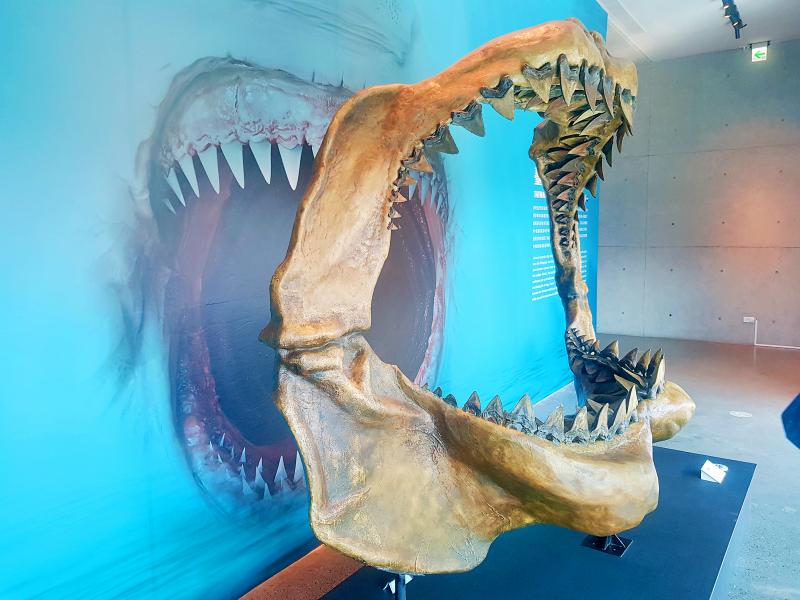
Photo: Tyler Cottenie
CAILIAO RIVER FOSSILS
The current Fossil Park is made up of five exhibition halls. In the first hall, the Natural History Education Hall, visitors get into the spirit of fossil hunting right away by descending a long ramp into the basement. As you descend, a dirt wall on the right shows you the different layers that scientists encounter when digging near the Cailiao River, and the types of fossils that may lie in each. Down in the basement, visitors can learn about how fossils themselves are formed and why this region has so many of them.
In the second hall, the History Hall, there is an exhibit dedicated to Chen Chun-mu (陳春木), the man who excavated and curated a large portion of the fossils now on display in the museum, earning him the nickname “Grandpa Fossil.”
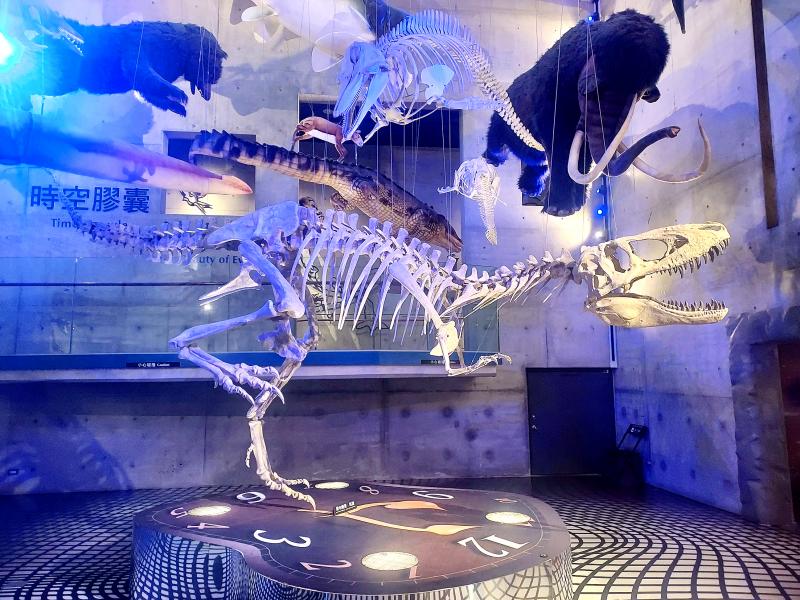
Photo: Tyler Cottenie
The first academic to take an interest in the fossils here was Japanese professor Ichiro Hayasaka of Taihoku Imperial University (modern-day National Taiwan University), who began excavations here in 1931 and collaborated closely with Grandpa Fossil. The fossils they and others uncovered in the Cailiao River area were originally on display in the Fossil Park’s predecessor, the Cailiao Fossil Museum, which opened in 1981, and are now mainly on display in the fourth exhibition hall, the Fossil Hall.
The fossilized remains of saber-toothed tigers, deer, crocodiles, steppe mammoths and rhinoceroses who used to call this area home are all on display here.
The museum’s showpiece is a beautiful complete skeleton of the Hayasaka rhinoceros, Nesorhinus hayasakai, uncovered not far from the Fossil Park. This endemic species was named after Hayasaka for his contributions to paleontology in Taiwan.
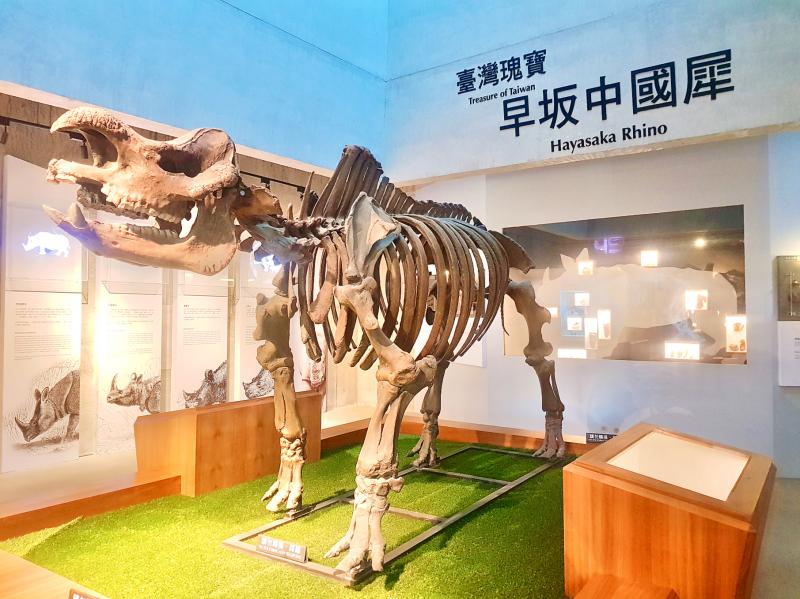
Photo: Tyler Cottenie
Also in the History Hall are written records from Tainan of great historical value, the Sinckan Manuscripts. Some of these documents were handwritten by Dutch missionaries in the Siraya language, which is now undergoing revitalization, in their attempts to convert the local indigenous population and are the earliest surviving examples of a written Austronesian language in Taiwan.
The practice of reading and writing in local languages was kept alive even after the Dutch left, so later Sinckan Manuscripts contain Chinese characters along with Siraya Romanization. This hall also has a comprehensive display of Siraya clothing and pottery, as well as a reconstructed Siraya house. Archaeological relics from older cultures on the island of Taiwan like the Niuchoutzu (牛稠子) and Tahu (大湖) are on display here, too.
BEYOND TAIWAN
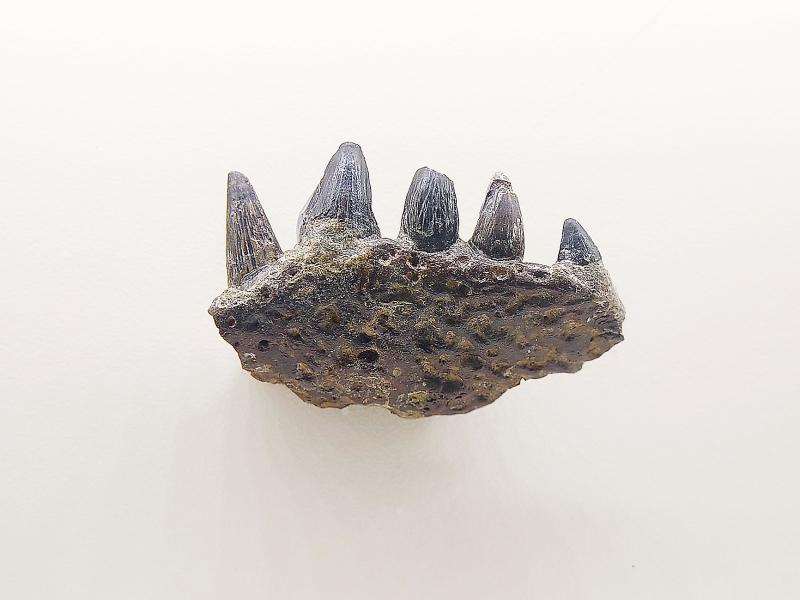
Photo: Tyler Cottenie
The third hall, the Evolution Hall, may be of special interest to children, who are probably expecting to see dinosaurs when visiting a “fossil” museum. Of course, Taiwan as an island only formed a few million years ago and so does not have fossils of the much older, land-dwelling dinosaurs. However, this hall looks much further back in time than the age of Taiwan, presenting the evolution of life on Earth from its earliest days up to the present.
There is, of course, the most quintessential dinosaur skeleton, Tyrannosaurus rex, on display, but visitors can also learn about more in-depth concepts like mass extinction events and sea level change’s effects on life.
The museum also showcases a number of fossils from the Penghu Islands and the Taiwan Strait, which, at various times when sea levels were lower, created a land bridge between the Asian mainland and Taiwan.
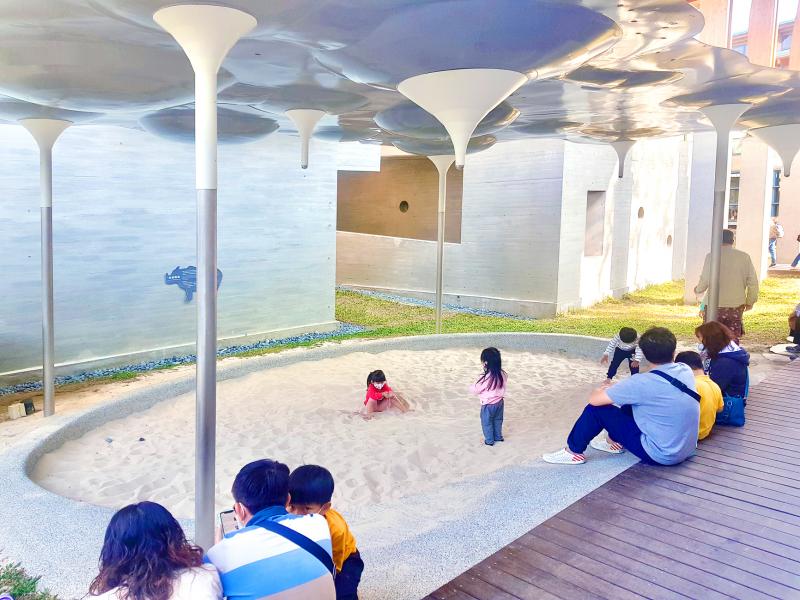
Photo: Tyler Cottenie
The oldest human fossils in the country were found in this region, Homo tsaichangensis, dating to between 190,000 and 450,000 years ago. There also used to be crocodiles living in the Penghu area. The oldest and most complete vertebrate skeleton discovered in the country is one of these crocodiles, dating to at least 15 million years ago.
INTERACTIVE ACTIVITIES
Far from being just a collection of static artifacts and descriptions, the museum features a number of hands-on activities that will keep younger (and even older) visitors engaged.
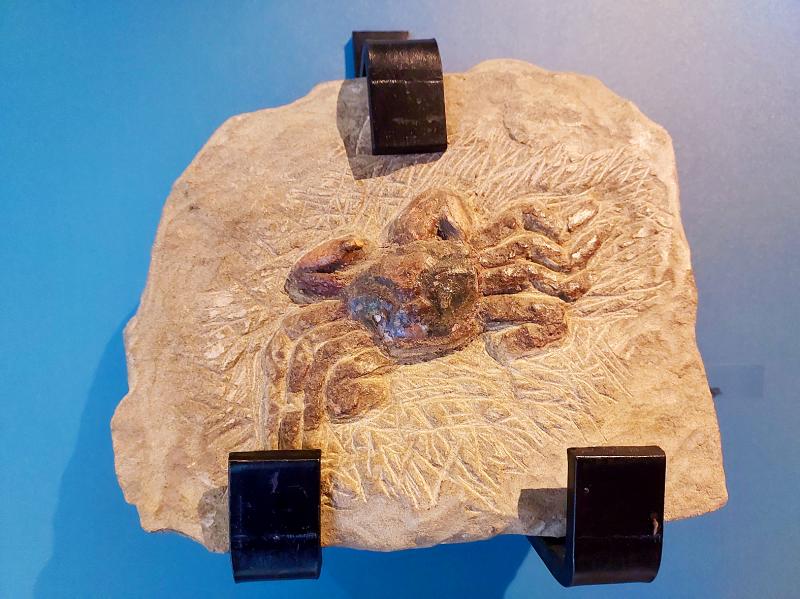
Photo: Tyler Cottenie
In the basement of the first hall, there is a virtual paleontological dig where visitors can “brush” sand off a screen and uncover various prehistoric animals from Taiwan. Outside in the courtyard, there is a real sandbox where young kids can play, digging around for whatever their imagination conjures up.
Nearly every exhibit in the museum has a number beside it that corresponds to a selection in the museum’s audio guide, which is online and can be accessed by smart phone. In the final exhibit hall, there is a touch-screen quiz that tests visitors’ knowledge of the museum’s exhibits. There are different difficulty levels to choose from here, with plenty of questions that may stump even the most observant of adults.
The final exhibit hall also features a room where children can color their own prehistoric animals and see them come to life on a screen. In the “Fossil Lab,” a workbench is set up behind glass so that visitors can observe museum staff cleaning and preserving fossils up close.
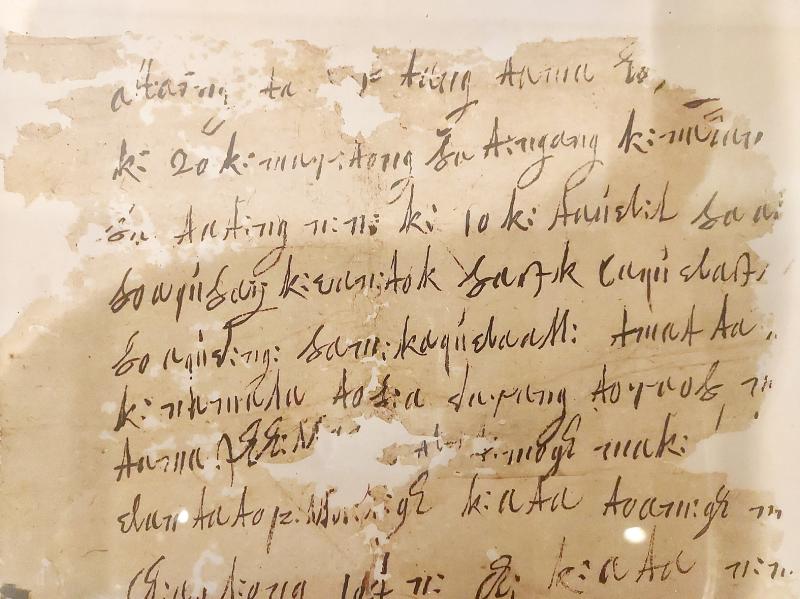
Photo: Tyler Cottenie
Although visitors can’t get their hands on real fossils here, the Fossil Hall features an augmented reality video activity where visitors can compare bone size to differentiate between species.
Finally, there are several fun photo opportunities throughout the museum. These include video projections where you can have your photo taken beside prehistoric animals, and a massive Megalodon jaw, complete with teeth, set up so the whole family can stand inside. An augmented reality filter can make it look as though this monster shark is eating everyone up.
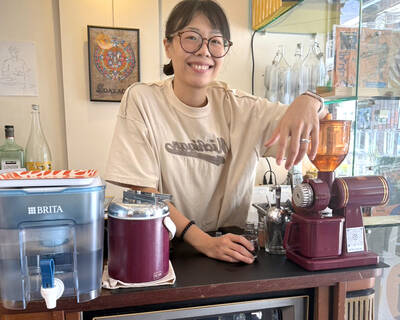
Cheng Ching-hsiang (鄭青祥) turned a small triangle of concrete jammed between two old shops into a cool little bar called 9dimension. In front of the shop, a steampunk-like structure was welded by himself to serve as a booth where he prepares cocktails. “Yancheng used to be just old people,” he says, “but now young people are coming and creating the New Yancheng.” Around the corner, Yu Hsiu-jao (饒毓琇), opened Tiny Cafe. True to its name, it is the size of a cupboard and serves cold-brewed coffee. “Small shops are so special and have personality,” she says, “people come to Yancheng to find such treasures.” She
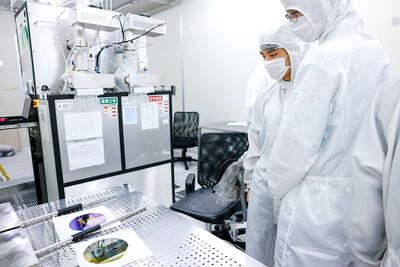
The low voter turnout for the referendum on Aug. 23 shows that many Taiwanese are apathetic about nuclear energy, but there are long-term energy stakes involved that the public needs to grasp Taiwan faces an energy trilemma: soaring AI-driven demand, pressure to cut carbon and reliance on fragile fuel imports. But the nuclear referendum on Aug. 23 showed how little this registered with voters, many of whom neither see the long game nor grasp the stakes. Volunteer referendum worker Vivian Chen (陳薇安) put it bluntly: “I’ve seen many people asking what they’re voting for when they arrive to vote. They cast their vote without even doing any research.” Imagine Taiwanese voters invited to a poker table. The bet looked simple — yes or no — yet most never showed. More than two-thirds of those
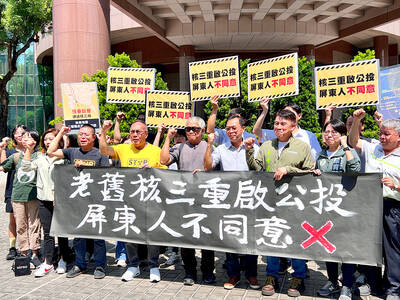
In the run-up to the referendum on re-opening Pingtung County’s Ma-anshan Nuclear Power Plant last month, the media inundated us with explainers. A favorite factoid of the international media, endlessly recycled, was that Taiwan has no energy reserves for a blockade, thus necessitating re-opening the nuclear plants. As presented by the Chinese-language CommonWealth Magazine, it runs: “According to the US Department of Commerce International Trade Administration, 97.73 percent of Taiwan’s energy is imported, and estimates are that Taiwan has only 11 days of reserves available in the event of a blockade.” This factoid is not an outright lie — that
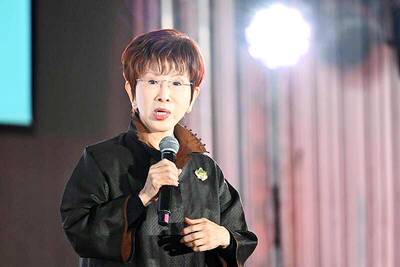
Former Chinese Nationalist Party (KMT) chairwoman Hung Hsiu-chu’s (洪秀柱) attendance at the Chinese Communist Party’s (CPP) “Chinese People’s War of Resistance Against Japanese Aggression and the World Anti-Fascist War” parade in Beijing is infuriating, embarrassing and insulting to nearly everyone in Taiwan, and Taiwan’s friends and allies. She is also ripping off bandages and pouring salt into old wounds. In the process she managed to tie both the KMT and the Democratic Progressive Party (DPP) into uncomfortable knots. The KMT continues to honor their heroic fighters, who defended China against the invading Japanese Empire, which inflicted unimaginable horrors on the